How to Set a Dining Table?
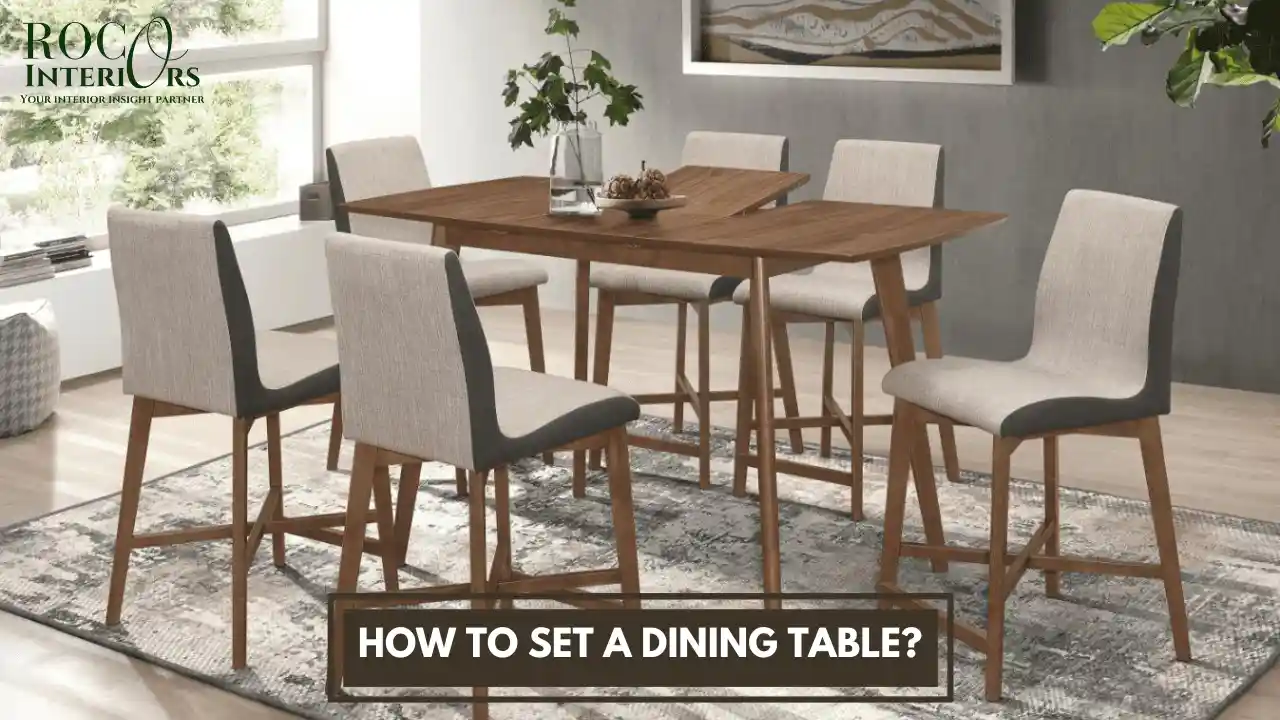

Haseeb Ali
Furniture Guide Expert
Table of Contents
Whether hosting a casual weekly family dinner or an upscale formal holiday feast, learning how to set a dining table properly helps make guests feel welcome while seamlessly enabling enjoyable interactions once seated.
Mastering a range of table dressing codes also ensures suitability for the occasion’s overall tone whether in need of white-glove formality or laidback warmth.
This comprehensive guide, including how to set a dining table, covers tablescape basics plus decorative and functional enhancements fitting casual meals through to cultured dinner parties. We’ll demonstrate both essential item placement along with creative personalized expressions via textures and colors.
And provide pointers reinforcing etiquette once dining commences. Equipped with this versatile knowledge, stress-free settings become second nature.
The Basics of Table Setting
While countless directions on how to set a dining table dress tables effectively, most share common fundamental items. Dinner Plates – Set one plate per guest just in from table edge, aligned space between. Napkins – Place napkins folded or fanned above the plate or in the center. Glasses – Position water goblet above plate to the right with any wine glasses groped beside it.
Silverware – Fork, knife, spoon go to the left of the plate starting with the fork farthest out working inward. With these four item types uniformly laid using spacing allowing room for elbows during eating, a basic tablescape takes shape. Customize further by adding decorative accents.
Casual Dining Settings
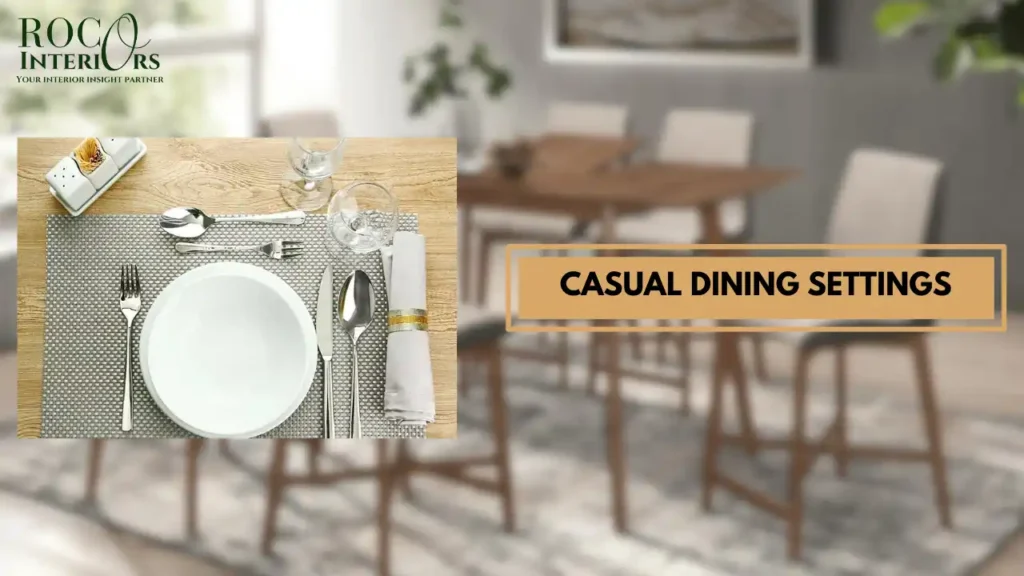
Casual tablescaping relaxes rigid arrangements in favor of welcoming warmth. Emphasize free-flowing conversations over strict protocols. For those looking to update their dining space with a practical yet stylish option, consider exploring options like a 4-chair dining table, perfect for smaller gatherings or family meals.
Breadbaskets – Set baskets or cutting boards stacked with sliced rustic bread beside butter pat plates. Condiments – Place salt and pepper shakers bracketing optional sauce boats for passed platters. Drinks – Scatter bottled beverages, chilling wine buckets or pitchers of water/iced tea.
Infuse personality through mix-and-match dinnerware collections carrying childhood memories, illustrating how to set a dining table with charm and warmth. Vary folded linen napkins inserting sprigs of fresh herbs or blooming flowers.
Centralize drip candles drawing smaller settings intimately inward. The casual table’s beauty lies in the comfort and flexibility putting guests at ease while personalized special touches spark joyful connections.
How to Set a Dining Table for Formal Dining Settings
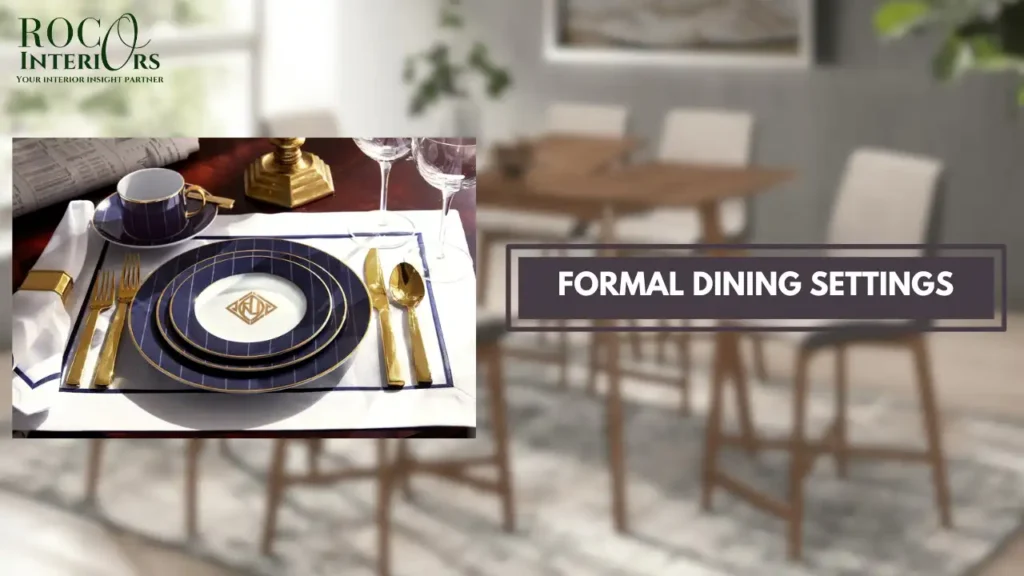
Proper fine dining code impresses guests with layers of plates, precisely indexed flatware and formally folded napkins. Mastering the components ensures suitability hosting cultural events from wedding receptions to holiday feasts.
A formal dining place setting comprises several meticulously positioned components starting with charger plates – large and often metallic-toned base plates upon which everything else per individual setting rests. Atop each charger sits a smaller rimmed dinner plate that will hold the first course served.
Bread and butter plates should be positioned just above the forks or angled attractively atop the charger’s upper right corner as part of how to set a dining table. The water goblet, as the largest clear glass, sits above and to the right of the dinner plate.
Any accompanying wine glass is then positioned just below the water glass, aligned to its right side. Elaborately folded cloth dinner napkins are traditionally draped either just left of the forks or centered partially covering charger plates as ornamental accents.
Flatware pieces are arranged outside-in with utensils used earliest in the multi-course meal positioned farthest from the plate progressing inward. So first comes the salad fork on the utmost left, followed by the dinner fork immediately right of it, where the dinner napkin drapes in between.
Along the far right side placed farthest out lies the dinner knife, blade facing inward toward the plate for safety. Above the knife rests the teaspoon. And farthest to the edge flipped onto its right side is the soup spoon, ready for immediate use when bowls of soup are served.
Getting the positioning and sequence of each element perfected takes practice through continually setting formal tables, which is a crucial aspect of learning how to set a dining table. But the choreography soon becomes second nature allowing focus on creativity within the code.
Centerpieces and Table Decor
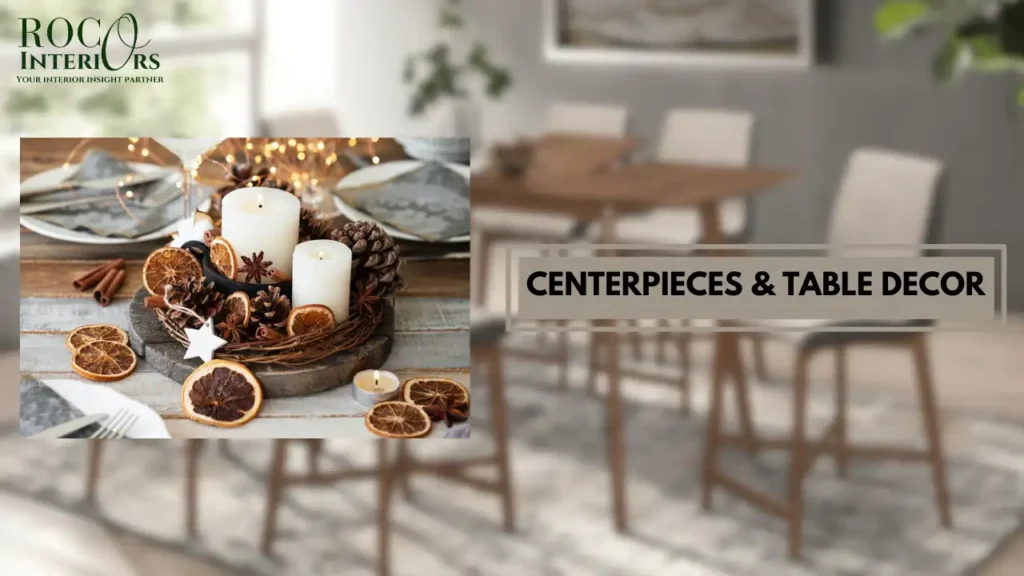
Tables feel blank slates without eye-catching focal points. Elevate settings by incorporating. Florals – Gather fresh bouquets, spilling vines or mini vases clustered loosely or formally.
Candles – Mix slim tapers with fat pillars in ascending height patterns dotted down centers interspersed with florals, demonstrating how to set a dining table with elegance. Fruits/Vegetables – Create abundant cornucopias spilling pomegranates, artichokes and kumquats in paired vessels.
Place Cards/Menus – Use calligraphed cards assigning seating around professionally printed menus rolled within napkin rings tying themes together.
Whether kept low and centered permitting conversation or built dramatically taller dictating directional views, varied combinations set unique moods. Remember to leave elbow room for dining once designed.
Special Occasions and Cultural Variations
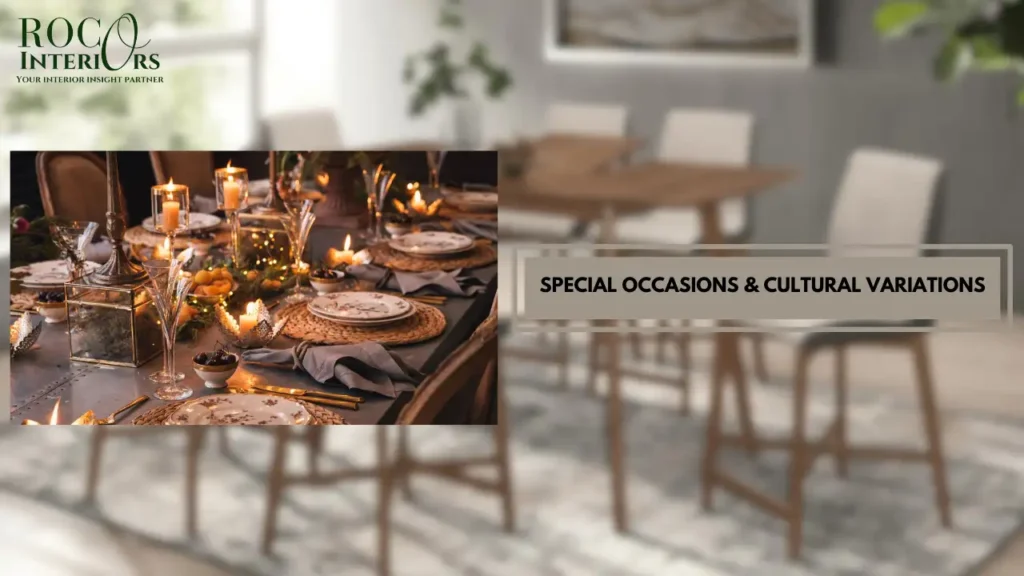
Certain events call for tailored table treatments aligned to symbolic meaning. Holidays feature colors echoing the season – black and orange for Halloween or red and green at Christmas. Weddings mix white flowers with glass vases, candles and lace touching on traditional matrimony.
Cultural events like Chinese New Year center auspicious fruits and candies sharing customary prosperity wishes. When uncertain on suitable representations, research how to set a dining table with celebratory emblems from meme-culture surrounding the occasion.
Authentically symbolic decors dial up excitement, occasion relevance and photo-worthy moments guests adore.
Conclusion
Whether cultivated over days in advance or quickly thrown together as unexpected guests arrive, learning how to set a dining table transforms it into a stunning centerpiece that need not overwhelm or intimidate. Arm yourself with a few base fundamentals – plates, napkins, glassware, and silverware as starting points. Building up styles from casual simplicity with personal embellishments through to fully formal dining codes now becomes more intuitive.
Before long, even impromptu settings will receive awed admiration every time you entertain guests. So approach tablescaping as an artistic outlet for self-expression, transporting diners’ imaginations throughout the meal – further elevating already meaningful shared occasions.
FAQs
How many types of glasses do I need for a formal dinner setting?
A formal dinner typically uses two glasses – one for water positioned above and to the right of the dinner plate, plus an accompanying wine glass placed just underneath angled toward the right below the water goblet. Additional glasses may be incorporated for champagne toasts, iced tea to accompany dessert or digestif liqueurs concluding the evening.
What’s the difference between a placemat and a charger?
Placemats are flat pieces set under plates largely for functional protection from hot dishes or dressy decoration laying a foundation. Charger plates serve a decorative role only – larger platter-like discs layered under dinner plates coordinating colors and textures as ornamental bases embellishing place settings.
Can I mix and match dinnerware for my table setting?
Absolutely. While formal occasions tend to feature matched tableware collections for uniformity, casual mix and match dinnerware brings eclectic charm reflecting personal style. Maintain cohesion using same-styled plates within individual place settings then vary patterns from setting to setting. Just ensure individual plates offer sufficient surface areas accommodating portions.
How do I fold napkins for a formal dining setting?
From simple rectangles to intricate shapes like water lilies or crowns, the options for shaping folded napkins are endless. Focus on pressed cross folds, layered triangles or rolled and tucked edges for effortless options coordinating various events. Or reference visual aids providing step-by-steps crafting intricate designs like rosebuds and bowties if aiming for awe-worthy embellished elegance.
Where should the cutlery be placed when the meal is finished?
Proper dining etiquette for concluding a meal’s courses involves grouping and resting finished pieces of silverware at an angle diagonally atop the right upper edge of the dinner plate – essentially forming an inverted ‘V’. This politely signals meal completion and readiness for table clearing or dessert serving without having to announce so aloud.





